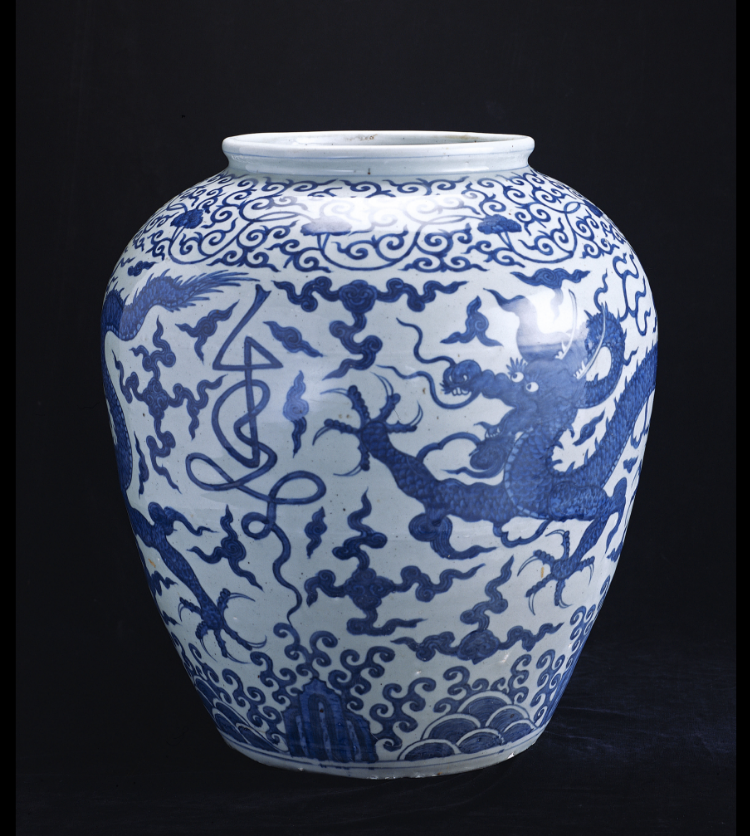Let us take a careful look at the motif on this jar. Have you noticed? Three layers can be distinguished: the shoulder has a cloud pattern interspersed with six flowers; near the base are waves that symbolize happiness and mountains that symbolize longevity; and finally, the belly is decorated with two five-taloned dragons soaring through the clouds. Between the two dragons, the Chinese character for longevity has been written in cursive script, implying the two dragons offer a long life. The jar in its entirety is large and elegant, its patterns complex and gorgeous. The five-taloned dragons represent the emperor, so this jar was likely used by a prominent person to wish for a long life.
The writing on the base of this blue and white jar says it was made during the reign of Emperor Wanli of the Ming dynasty, so it was likely produced in the 16th or 17th century. Blue and white porcelain is produced by painting and firing glaze that contains cobalt. Following changes in the temperature and differences in the proportions of ingredients and glaze deposits, different layers of blue are produced after firing. If you take a careful look at the lines of the clouds and dragon scales on this jar, you will see changes in the depth of the glaze.
